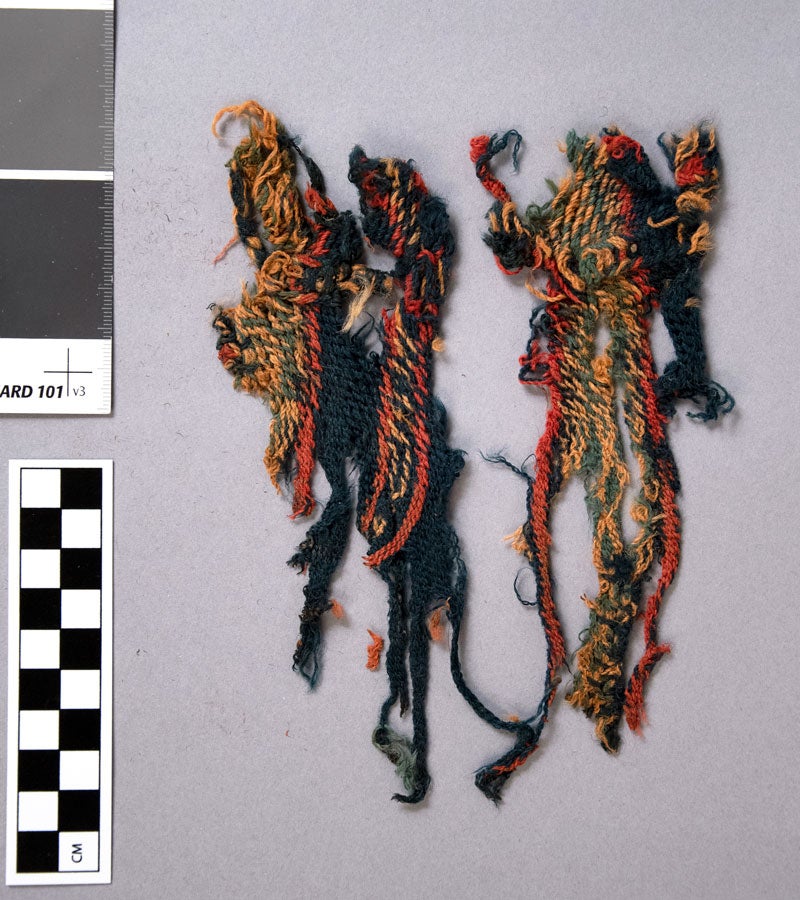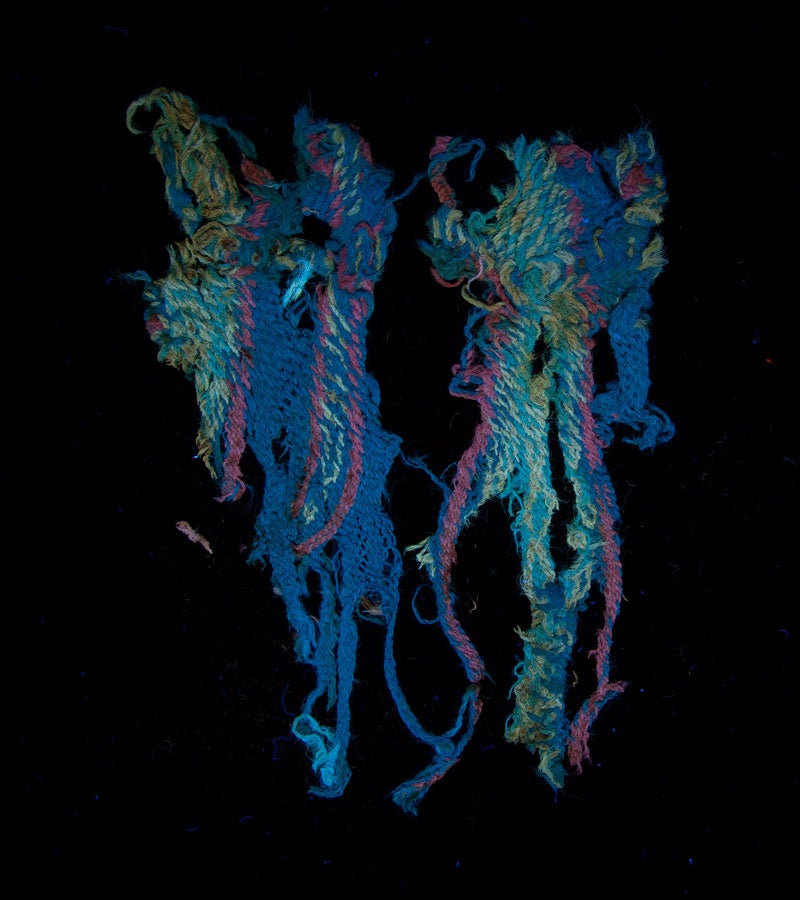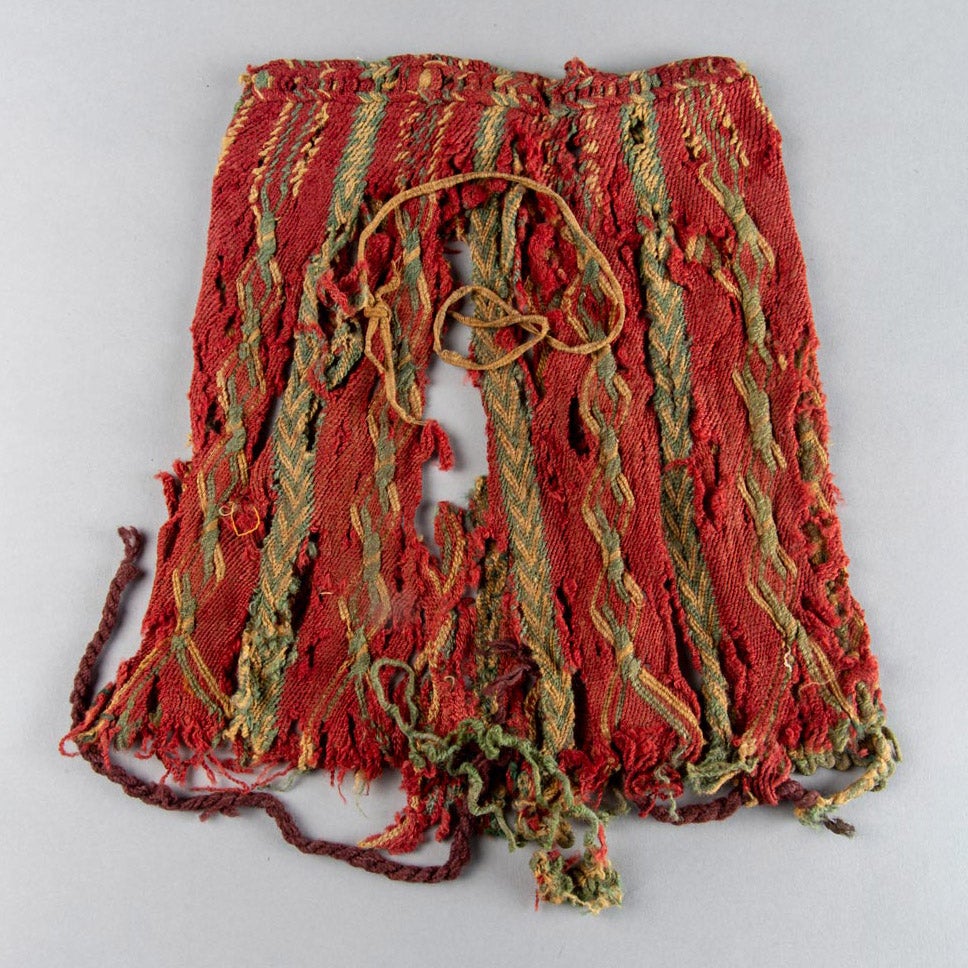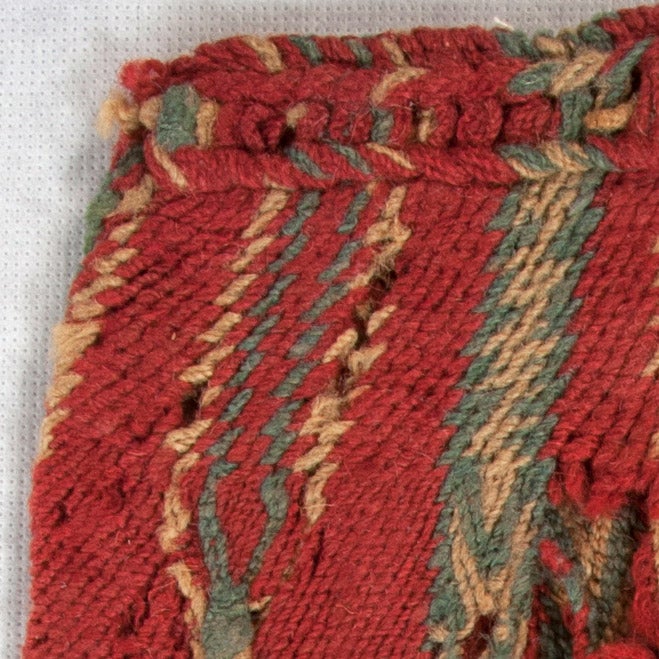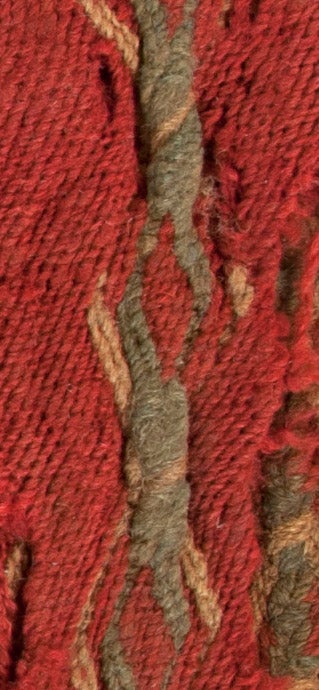Ugly Object of the Month — February 2022
By Suzanne Davis
Hello, Ugly Object Fans, and welcome to February—a month of celebration. This is Black History month, and the theme for 2022’s celebration here at U-M is Black Joy. Carrie and I are super excited about the many events celebrating the lives and achievements of Black people of all backgrounds, and if you’re here at U-M and want to join us in attending some of these, you can see a list on U-M’s Black History Month webpage.
Thanks to St. Valentine’s Day on February 14, this is also a month when we focus on love; love of romantic partners, family, friends, favorite foods, and funky craft projects. The latter is what we are showcasing in this blog post—it is an extra special collage made of ancient textiles, cut and pasted to make a fantastical chimera-like creature that looks (sort of) like a horse in ancient war armor. I call him Franken Horse.
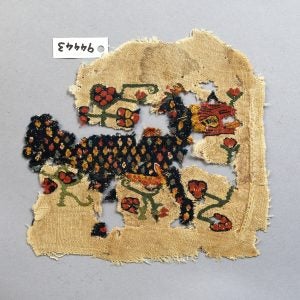
Franken Horse is an exciting mash-up of two different tapestry-woven textiles. The beige wool background of the piece is ornamented with a vining floral design in dark blue, red, green, and yellow wool. This fragment has a large, irregular loss in the center, and into this, another fabric has been sewn. This second fabric has a dark blue ground decorated with small, fat cross shapes in pinkish-red, green, yellow, undyed linen, and light blue. Each shape has a central boss of a contrasting color, either red or yellow. This piece has been placed so that it appears to create the body of an animal, with an element of the background fabric appearing as the creature’s head (and this thing has a horn, like the armor for a warhorse would have). Although both fabrics appear to be ancient, their conjunction is the work of a more contemporary creative hand; they are stitched together with modern thread. Overall the effect is bright, highly patterned, and strangely attractive. You kind of can’t stop looking at it.
This textile comes from the collection of a famous twentieth-century Cairo antiquities dealer, Phocion Tano, and it tells us a little bit about what early antiquities collectors were interested in, namely color and exciting designs. If you feel as much love for Franken Horse as we do, you are in luck: he is on view now in the Kelsey in Focus mini-exhibition, Ancient Abstraction in Textiles from Late Roman Egypt. If you are willing to brave the frigid February weather, you can see him in person on the first floor of the Upjohn Exhibit Wing here in Ann Arbor, where is he is in good company with two of his abstracted horsey textile friends. To be frank, any of the three would qualify for this series but, in our view, Franken Horse is the winner by at least a nose. You won’t be sorry you visited.
Can’t make it to the museum? You can also visit virtual versions of this and all previous Kelsey in Focus exhibitions on the Kelsey website.
Ugly Object of the Month — February 2022 Read More »

